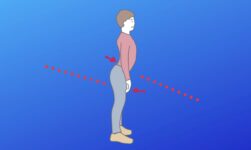Flexitarian diets are an excellent way to incorporate more vegetables, fruits, whole grains, legumes, and other plant-based foods into your daily meal plan while feeling full on fewer calories than other eating plans may provide. Flexitarian diets can be beneficial to the environment, as they restrict meat and dairy intake. This reduces greenhouse gas emissions.
It’s easy to stick to
If you’re searching for a diet that doesn’t involve counting calories or following strict rules, flexitarian eating habits are your ideal solution. With this approach, you can focus on getting plenty of healthy products such as fruits, vegetables, whole grains, legumes, and nuts while eating less meat and dairy products.
- People choose flexitarian eating patterns for various reasons. Some do it to improve their health, while others worry about the environmental impact of their food choices.
- No matter your motivations, a flexitarian lifestyle can be achieved if you take baby steps and set realistic objectives. Begin by cutting back on meat and dairy intake to one day per week, then gradually increase it up to two or more days per week.
- Once you feel confident with this new diet, it may be time to explore some recipes. There are plenty of delicious flexitarian options online or through your local grocery store; just remember to look for vegetarian and vegan versions of popular dishes instead of just beef or chicken versions.
- You can also add more plant proteins to your meals, such as beans, lentils, and edamame to make up for the lack of meat protein. These low-fat foods are high in fiber which promotes weight loss and heart health benefits.
- Another advantage of flexitarian eating habits is their ease of implementation; you don’t have to give up your favorite foods in order to follow them. You can still enjoy your meats and cheeses with just a few adjustments when planning out your flexitarian meals.
- Eating more fruits and vegetables is a great idea to boost your vitamin intake, making you healthier overall and decreasing the risk of diseases such as diabetes or cancer. Eating more produce has also been proven to decrease stress levels and promote wellness in general.
It’s good for the environment
Flexitarian eating habits are becoming more popular, as people look to reduce their meat consumption. Not only is this type of diet beneficial for individuals’ health, but it’s also good for the environment.
- Flexitarians don’t necessarily go vegan, but they do try to limit animal products and instead focus on eating more fruits, vegetables, legumes, nuts,, and whole grains for their nutritional content. Eating these nutritious foods can help keep you healthy while decreasing the risk of disease.
- Another way flexitarian diets are beneficial to the environment is that they reduce greenhouse gas emissions, which contribute to climate change. Livestock farming is one of the primary contributors to global warming, so cutting back on this food source can significantly reduce your carbon footprint.
- Furthermore, the meat industry is a major cause of deforestation and water pollution; thus, taking this approach can also benefit our oceans and wildlife by protecting them from further destruction.
- Flexitarian diets emphasize produce over packaged and processed foods, which may contain added salt or sugar. Furthermore, plant proteins like beans and lentils are prioritized; these low-calorie sources contain plenty of protein, fiber and nutrients.
- Flexitarian diets tend to be lower in fat and cholesterol than most, making them healthier for your health. Plus, flexitarian eating may help protect you against chronic illnesses like heart disease, diabetes, and cancer by helping keep you out of chronic diseases like those mentioned above.
- Furthermore, a flexitarian diet can suppress your craving for sweets and refined carbohydrates, which may be detrimental to your health. This plan encourages you to eat more produce like fruits and veggies which are packed with essential vitamins, minerals, and fiber that will fill you up and support healthy weight maintenance.
- If you choose to eat meat, opt for organic, free-range or pasture-raised options from sustainable sources in order to minimize your environmental footprint. Furthermore, opt for lean cuts of meat to minimize extra animal fat intake.
It’s good for your health
Flexitarian eating habits are an excellent way to incorporate more plant-based foods into your diet, helping you lose weight, boost energy levels and enhance overall well-being.
- Contrary to other weight loss or cleansing trends, the flexitarian approach doesn’t deprive you of treats or tempting foods. Instead, it emphasizes healthy choices while giving you control and motivation to maintain a healthier lifestyle.
- Flexitarian eating plans encourage you to incorporate more fruits, vegetables and whole grains into your meals. These foods are packed with fiber, nutrients and water which will help you feel full and satisfied after each meal.
- Another advantage of a flexitarian eating plan is that it’s simple to get enough protein in your meals. Furthermore, this lifestyle may reduce your risk for heart disease and cancer.
- Sticking with a flexitarian diet requires cutting back on meat consumption and replacing it with more vegetables, fruits, beans, legumes, and nuts. These Superfoods provide essential nutrients and antioxidants which may help combat diseases like cancer or cardiovascular disease.
- According to registered dietitian Alyssa Pike, following a flexitarian diet can help you meet your daily recommended amount of fiber. Furthermore, it may prevent overeating since it makes satisfying cravings more challenging.
- Vegetables should always be part of your meals, but you could also add lentils and beans to the mix as these contain soluble fiber which helps lower cholesterol levels. Don’t forget to incorporate nuts and seeds into meals too – they contain heart-healthy fats!
- Finally, aim to eat five servings of fruit and vegetables per day – either raw or cooked; the former is preferred since it helps maintain steady blood sugar levels and prevents sudden spikes in insulin.
- Flexitarian eating plans can be an excellent way to promote good health while making an environmental and social contribution. By cutting back on meat consumption and increasing plant-based meals in your meals, you help conserve planet resources and reduce greenhouse gas emissions.
It’s good for your wallet
Flexitarian eating habits are an excellent way to reduce food waste and budget responsibly since they don’t depend on expensive ingredients or special items like meat or fish. A study revealed that flexitarians could save up to $750 annually on grocery bills by not eating out as often.
- Flexitarian diets aim to eliminate processed foods, refined sugars and carbs while still enjoying some meat or fish occasionally. They ensure their meat or fish is of high quality – such as organic free-range grass-fed beef and dairy, pastured chicken eggs and sustainably caught fish.
- Furthermore, these diets provide numerous health advantages. For instance, they are an excellent source of protein, iron, and zinc which may help combat heart disease, obesity, and cancer.
- Another benefit of flexitarian eating habits is their ease of maintenance. You don’t need to worry about what you’ll eat at parties or takeout chains like Chipotle, Sweetgreen, and Chop’t that offer vegetarian options.
- Maintaining a flexitarian diet doesn’t have to be intimidating if you have the right mindset and some guidelines in mind. Nutritionist Dawn Jackson Blatner suggests eating three meals and two snacks that each contain 150 calories daily.
- She suggests replacing some of your meat and fish intake with plant proteins like beans, peas, and eggs. This will guarantee enough protein for healthy muscle development while decreasing saturated fats and cholesterol in your food intake.
- You can also boost the nutritional content of your flexitarian diet with more nutrient-rich vegetables. These are an excellent source of antioxidants, fiber, and B vitamins which will support both immunity and metabolism.
- Flexitarians should also be mindful of how much water they drink to stay hydrated and healthy. Furthermore, they should aim to incorporate more whole grains and legumes into their meals for added fiber and protein content.
Ending Thoughts
Though the flexitarian diet doesn’t specify exercise requirements, Blatner recommends getting regular moderate-intensity exercise as a way of staying strong and healthy while increasing your likelihood of sticking with it long-term. If you want to reduce food waste, making your own lunches and taking them with you to work can be a great idea. Not only is this more cost-effective than buying out, but it will make it easier for you to stick with your new lifestyle.





